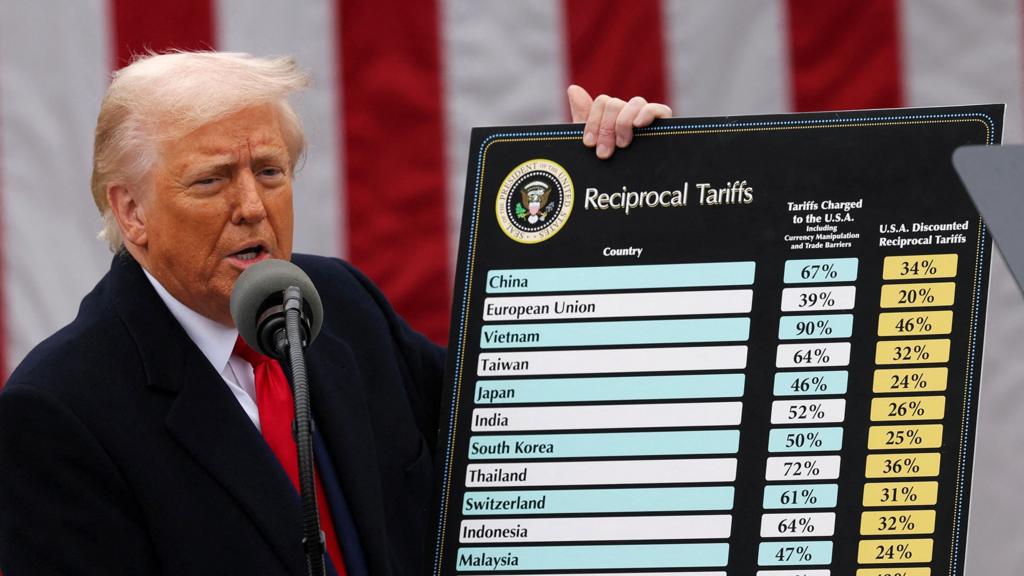Trump's reciprocal tariffs send shockwaves through global supply chains

On April 2, President Donald Trump introduced sweeping reciprocal tariffs aimed at addressing perceived trade imbalances. The policy imposes a baseline 10 per cent tariff on all imports, with significantly higher rates applied to specific countries. These measures have sent ripples through the global textile and apparel (T&A) industry, which relies heavily on international supply chains for raw materials and finished goods.
Tariff structure and immediate effects
The newly implemented tariffs vary by country, reflecting the administration’s objective to counteract foreign tariffs and trade barriers. China faces the steepest increase, with tariffs exceeding 50 per cent . The European Union (EU) is subject to a 20 per cent tariff, while Japan, South Korea, and India each face a 26 per cent tariff. These measures are part of a broader strategy to rectify what the administration describes as longstanding trade imbalances.
Implications for the T&A sector
The global fashion industry, which sources a significant portion of its textiles and apparel from Asia, is expected to experience major disruptions. Countries such as China, Vietnam, and Bangladesh, which are key suppliers to the US market, will be directly affected. According to Vogue Business, higher tariffs are likely to elevate production costs, leading to increased consumer prices and forcing companies to reevaluate their sourcing strategies.
India’s strategic response
India, facing a 26 per cent tariff, is actively working to mitigate the impact through diplomatic negotiations. The Apparel Export Promotion Council (AEPC) notes that 28 per cent of India’s textile and apparel exports are directed toward the US. While lower duties apply to cotton fabrics, tariffs on man-made fibers reach as high as 33 per cent . In response, India is exploring a bilateral trade agreement with the US to secure more favorable terms and sustain its competitive edge in the American market.
Table: Tariff impact by country
|
Country |
T&A tariff (%) |
Affected sectors |
Expected price increase (%) |
|
China |
50%+ |
Apparel, Footwear |
20-30% |
|
India |
26% |
Cotton, Fabrics |
10-15% |
|
EU |
20% |
Luxury Apparel |
12-18% |
|
Japan |
26% |
Technical Textiles |
10-15% |
|
South Korea |
26% |
Synthetic Fibers |
8-12% |
The tariff policy is expected to have a mixed impact on the US economy. While the measures aim to support domestic manufacturers, they will also result in increased costs for raw materials and finished goods, ultimately affecting businesses and consumers.
- Consumer costs: The tariffs will likely lead to a 15-25 per cent increase in retail prices for clothing and footwear.
- Production expenses: US-based manufacturers dependent on imported textiles and machinery will face rising operational costs, potentially leading to job losses.
- Supply chains impact: To counter rising costs, brands may explore alternative sourcing options, including domestic suppliers and suppliers from Latin America.
- Retail sector challenges: Mid-range and budget retailers, such as Walmart and Target, which rely on cost-effective imports, are expected to encounter significant financial strain.
Market reactions and global economic outlook
The announcement has led to immediate volatility in financial markets. Major US stock indices experienced notable declines in after-hours trading on April 2, 2025. The SPDR S&P 500 ETF fell by over 2 per cent , while the Dow Jones ETF and Nasdaq-tracking Invesco QQQ Trust dropped by 1 per cent and 3 per cent , respectively. Leading global brands with intricate supply chains, including Apple and Tesla, saw share declines of 6 and 4 per cent , while apparel companies such as Nike and Lululemon reported stock price drops of 7 per cent and 11 per cent, respectively.
The tariffs have triggered strong responses from key trading partners. China has denounced the move and is considering countermeasures. The EU and Japan have expressed concerns, particularly regarding potential disruptions to their automotive industries. South Korea is pursuing diplomatic negotiations, while India is seeking tariff reductions to ease tensions. Canada and Mexico, which are exempt from the latest round of tariffs due to existing trade agreements, remain watchful as the situation unfolds.
The imposition of these tariffs signifies a major shift in global trade relations, introducing new challenges for the textile and apparel industry. As governments and businesses navigate the evolving trade landscape, strategic adjustments, diplomatic negotiations, and supply chain realignments will be crucial in mitigating economic disruptions and maintaining market stability.
